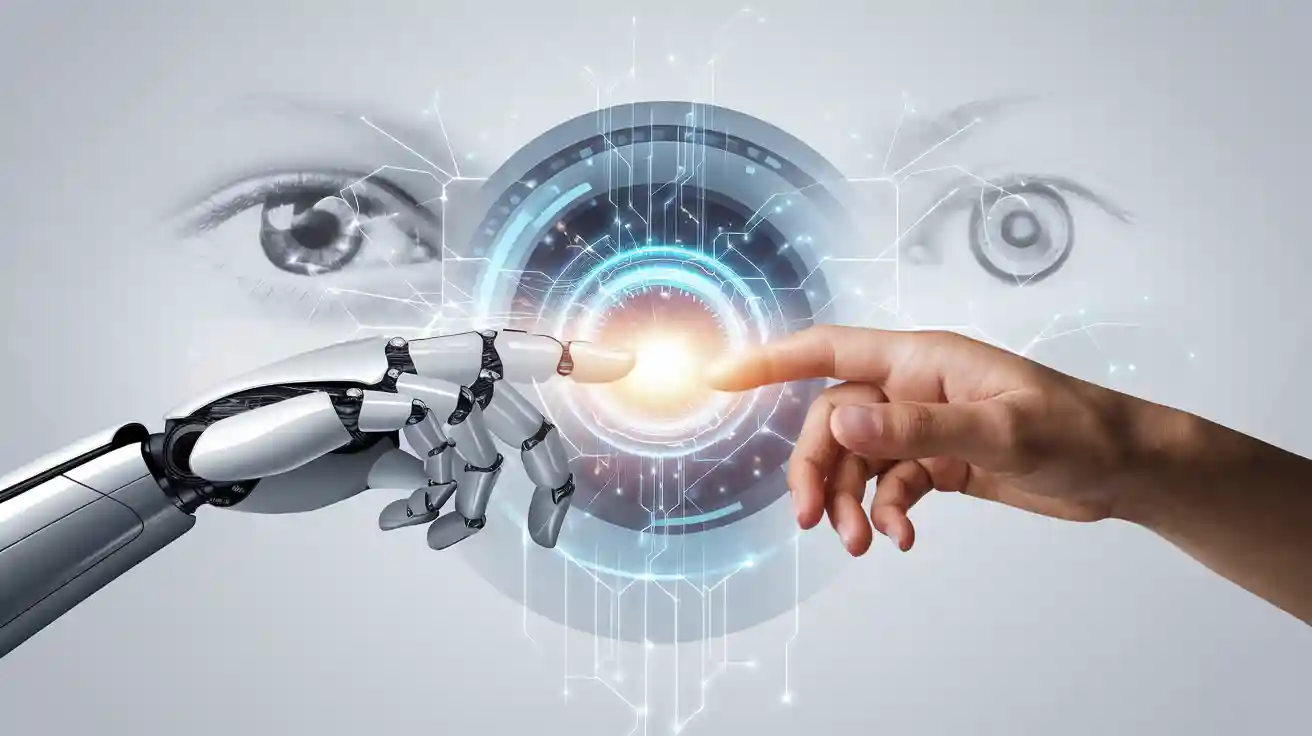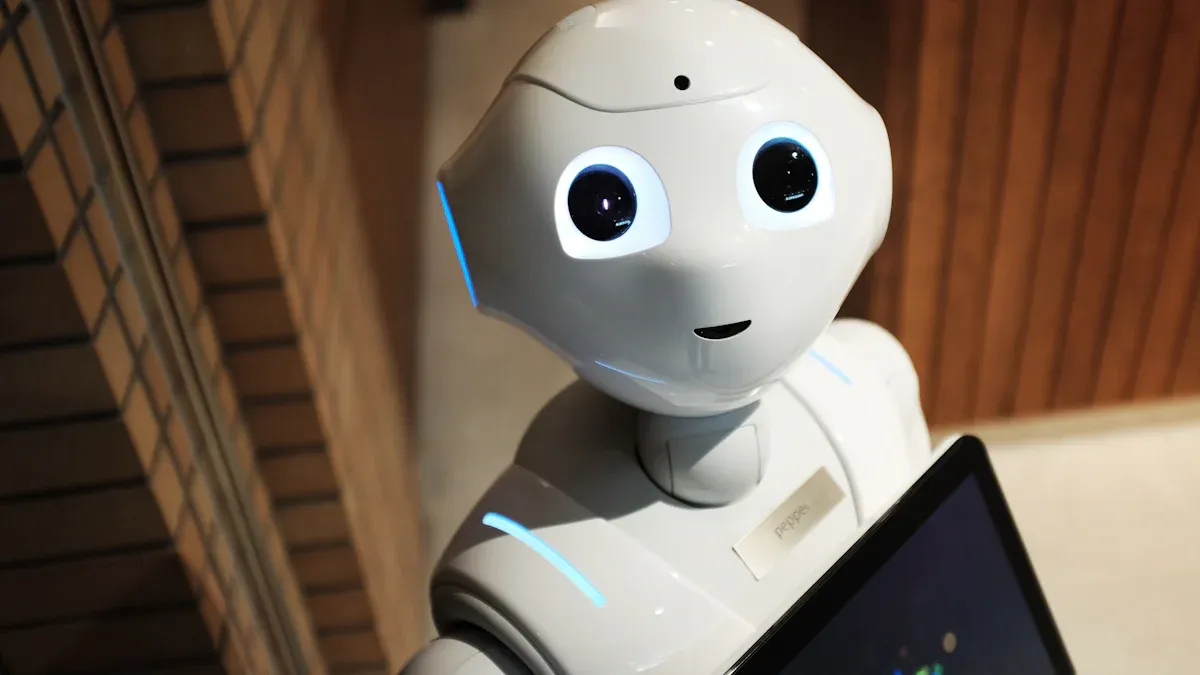Can Neural Network Machine Vision Replace Humans?

Neural network machine vision systems have revolutionized how machines interpret the world around them. These systems process images with remarkable speed and precision. For example, they identify manufacturing defects 300 times faster than human inspectors, achieving an impressive 99.7% accuracy rate. Hardware-accelerated neural networks handle millions of operations per second, enabling near-instantaneous actions. Despite these advancements, challenges remain in replicating human adaptability and judgment.
Key Takeaways
Neural network vision systems analyze images 300 times faster than people. They can be up to 99.7% accurate. This speed is very important in fields like healthcare, where fast checks can save lives.
These systems are great at doing the same task over and over. They work well in big jobs, keeping quality steady in factories. They can check thousands of items daily without getting tired.
However, neural networks have trouble understanding context and adapting. They depend a lot on good datasets, which can make them less useful in different real-world situations.
Strengths of Neural Network Machine Vision

Speed and Efficiency in Visual Data Processing
Neural network machine vision systems process visual data at incredible speeds. These systems analyze millions of images in seconds, making them ideal for time-sensitive tasks. For example, convolutional neural networks (CNNs) excel in image classification tasks, where they identify objects or patterns with minimal delay. This speed is crucial in industries like healthcare, where rapid image analysis can save lives.
To illustrate their efficiency, consider the following table showcasing performance benchmarks of various models:
Model | Dataset | Accuracy Rate | Error Rate |
|---|---|---|---|
LeNet-5 | Cats vs. Dogs | 91.89% | N/A |
AlexNet | ImageNet | N/A | 15.3% |
Custom DNN | Cats & Dogs | 92.7% | N/A |
Ensemble ResNet | N/A | 99.1% | N/A |
VGG16, MobileNet, | Cats & Dogs | N/A | N/A |
Resnet50, InceptionV3 |
This table highlights the remarkable speed and accuracy of neural networks in processing visual data. By leveraging advanced algorithms, these systems outperform traditional methods in both speed and precision.
High Accuracy in Object and Pattern Recognition
Neural network machine vision systems achieve high accuracy in object detection and pattern recognition. These systems rely on vast datasets and sophisticated algorithms to identify objects in complex environments. For instance, they can distinguish between subtle differences in images, such as identifying a cracked component on an assembly line.
Researchers have introduced the Minimum Viewing Time (MVT) metric to measure model accuracy. This metric evaluates how quickly a model can recognize an image. Studies reveal that while neural networks perform well on simple images, they face challenges with more complex ones. Larger models improve on easier tasks but struggle with intricate patterns, highlighting the need for further advancements.
Despite these challenges, neural network machine vision systems remain highly effective in real-world applications. Their ability to process and analyze visual data with precision makes them indispensable in fields like security, where accurate object detection is critical.
Scalability for Repetitive and Large-Scale Tasks
Machine vision systems powered by neural networks excel in scalability. They handle repetitive tasks and large-scale operations with ease. For example, in manufacturing, these systems inspect thousands of products daily without fatigue. This capability ensures consistent quality control and reduces human error.
A decentralized policy optimization framework enhances scalability further. This approach distributes tasks across multiple agents, enabling neural networks to manage complex operations efficiently. In real-world applications, such as logistics, this framework allows hundreds of agents to work together seamlessly. Empirical results show that this method not only maintains performance but also improves scalability, addressing previous limitations in large-scale AI systems.
By leveraging these advancements, neural network machine vision systems have become essential in industries requiring high-volume data processing. Their ability to scale ensures they meet the demands of modern applications, from automated warehouses to smart cities.
Limitations of Neural Network Machine Vision
Lack of Contextual and Situational Understanding
Neural network machine vision systems excel at processing visual data, but they struggle to understand context and adapt to situational complexities. These systems rely on patterns and data they have been trained on, which limits their ability to interpret nuanced scenarios. For example, while a machine vision system might detect a cracked component during inspection for defects, it cannot determine whether the crack poses a safety risk without additional input.
A study assessing deep learning feature selection methods highlights this limitation. It found that neural networks often fail when dealing with noisy or high-dimensional datasets. Even simple synthetic datasets can challenge these systems, showing their inability to grasp context effectively. Traditional methods like Random Forests and LassoNet performed better in these scenarios, emphasizing the gap in contextual understanding.
Research on recurrent neural networks (RNNs) further illustrates this challenge. It shows that neurons in navigational brain regions adapt their firing patterns based on context, enabling humans to navigate complex environments. Neural networks, however, struggle to replicate this adaptability, making it difficult for them to interpret contextual and situational cues effectively.
This lack of contextual understanding limits the applications of machine vision in areas requiring nuanced decision-making, such as autonomous vehicles or medical diagnostics.
Inability to Generalize Across Diverse Domains
Neural networks face significant challenges when applied to tasks outside their training domains. These systems perform well when the data aligns closely with their training datasets but falter when exposed to new or diverse environments. This inability to generalize restricts their effectiveness in real-world applications where variability is common.
Domain generalization (DG) research sheds light on this issue:
DG aims to improve model performance on unseen domains by training on multiple source domains.
Unlike traditional methods, DG does not rely on access to target domain data during training, highlighting the difficulty of adapting to unknown domains.
Techniques like meta-learning are essential to enhance generalization capabilities across diverse domains.
For instance, a neural network trained for object detection in urban environments may struggle to identify objects in rural settings. This limitation underscores the need for more robust training methods to improve adaptability across varied scenarios.
Dependence on Extensive and High-Quality Datasets
The performance of neural network machine vision systems heavily depends on the quality and quantity of their training data. These systems require vast datasets to learn and improve, making data acquisition a critical factor in their success. However, collecting and curating high-quality datasets can be time-consuming and expensive.
Studies demonstrate the impact of dataset quality on performance. Models trained with high-quality datasets showed a performance increase of at least 3% compared to those trained with traditional methods. Experiments using datasets like MNIST, Fashion MNIST, and CIFAR-10 revealed that a data-centric approach consistently outperformed a model-centric approach. This reliance on extensive datasets highlights a key limitation of neural networks.
Moreover, the need for diverse and representative datasets poses additional challenges. Machine vision systems trained on biased or incomplete data may fail to perform accurately in real-world scenarios. For example, a system designed for defect detection in manufacturing might miss defects if the training data does not include all possible variations.
The dependence on high-quality data limits the scalability of neural network machine vision systems, especially in industries where data acquisition is difficult or costly.
Human vs. Machine Vision
Creativity and Problem-Solving Capabilities
You bring creativity and problem-solving skills to tasks that machines cannot replicate. Neural network machine vision systems excel at repetitive tasks, but they lack the ability to think outside the box. For example, when faced with an unfamiliar scenario, you can brainstorm solutions and adapt your approach. Machines, on the other hand, rely on pre-programmed algorithms and training data. They cannot innovate or create new strategies.
Consider how artists and designers use their vision to create unique works. Machines can analyze patterns in existing art, but they cannot generate original ideas. Similarly, in problem-solving, your ability to combine intuition and experience allows you to tackle challenges that neural networks cannot address. This creative edge ensures that humans remain indispensable in fields requiring innovation.
Ethical and Contextual Decision-Making
Ethical and contextual decision-making is another area where you outperform machines. Machine vision systems, including those powered by deep learning, often lack explainability. This can lead to errors with serious consequences. For instance:
AI algorithms may misinterpret natural movements as disengagement, leading to unfair disciplinary actions.
Augmenting neural networks with human context has improved object detection accuracy by 1-3% and associated object detection by 3-20%.
These examples highlight the importance of human oversight in machine vision applications. You can assess situations holistically, considering ethical implications and context. Machines, however, struggle to interpret nuances, making them less reliable in scenarios requiring moral judgment.
Adaptability in Complex and Unpredictable Scenarios
Your adaptability in complex and unpredictable scenarios sets you apart from machines. Neural network machine vision systems depend on extensive training data and predefined rules. When faced with unexpected situations, they often fail to respond effectively. You, however, can quickly analyze new information and adjust your actions.
For example, in disaster response, you can assess the environment and prioritize tasks based on real-time observations. Machines might struggle to adapt if their training data does not cover similar scenarios. This flexibility makes you essential in fields where conditions change rapidly, such as emergency services or dynamic industries like logistics.
Neural network machine vision systems excel in tasks like image analysis and repetitive applications, but they cannot replace human adaptability and judgment. Collaboration between humans and machines offers the best outcomes. For example, AI enhances diagnostic accuracy in medical imaging, while human interpretation ensures ethical and contextual decisions.
Effective collaboration requires clear communication from AI systems and optimized task allocation. Future research focuses on improving workflows and patient communication in healthcare.
Aspect | Findings |
|---|---|
Collaborative Mode | AI augments human expertise in medical imaging for accurate diagnoses. |
Importance of Human Skills | Human interpretation is essential for diagnosis despite AI's effectiveness in classification. |
Goals of HAIC Framework | Focus on enhancing diagnostic accuracy and efficiency through collaboration. |
Communication Methods | AI must provide clear and comprehensible outputs for effective collaboration. |
Decision Support Quality | Evaluating metrics like Decision Effectiveness is crucial in ICU settings. |
Future Research Directions | Investigate impact on radiologists' workflow and patient communication. |
By combining human creativity with machine vision capabilities, you can unlock new possibilities across industries.
FAQ
What industries benefit the most from neural network machine vision?
Industries like healthcare, manufacturing, and logistics benefit greatly. These systems improve efficiency, ensure quality control, and enhance safety by processing visual data faster and more accurately than humans.
Can neural network machine vision systems make ethical decisions?
No, they cannot. These systems lack moral reasoning and contextual understanding. You must oversee their decisions to ensure ethical and fair outcomes in critical applications.
How do neural networks learn to recognize objects?
Neural networks learn through training on labeled datasets. They identify patterns and features in images, improving accuracy over time with more data and advanced algorithms.
💡 Tip: Always ensure datasets are diverse and high-quality to improve the performance of machine vision systems.
See Also
The Role of Deep Learning in Advancing Machine Vision
Does Filtering Improve Accuracy in Machine Vision Systems?
Exploring New Opportunities for Machine Vision with Synthetic Data
